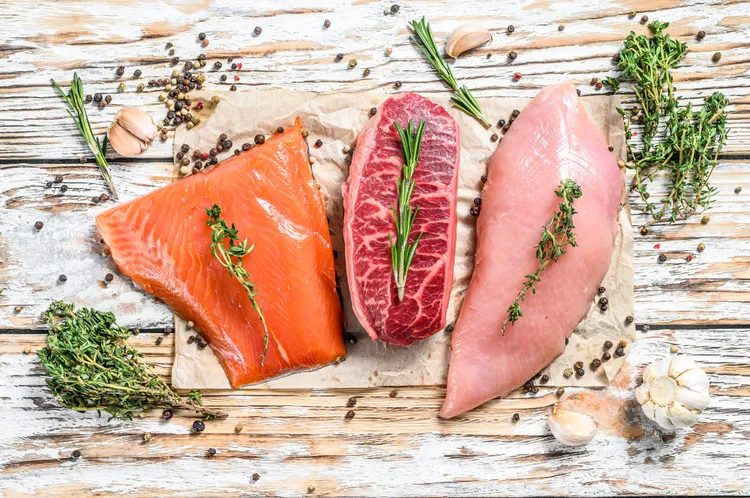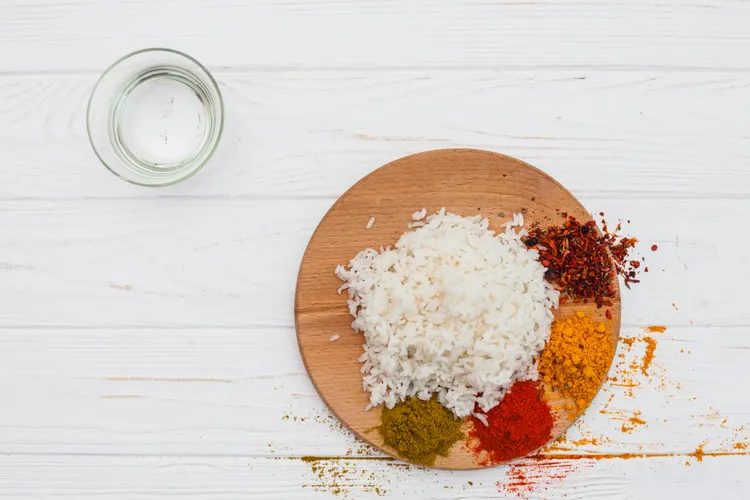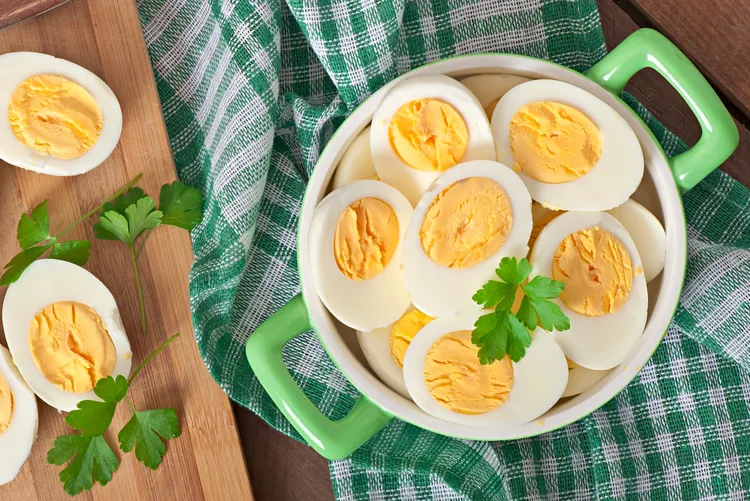Meat Battle: Chicken Breast vs. Beef vs. Salmon Fillet – Which Is the Ultimate Protein Powerhouse?
When it comes to protein-packed, nutrient-dense foods, chicken breast, beef, and salmon fillet are heavyweights in the culinary world. Each brings its own unique flavor, texture, and nutritional profile to the table, making them staples in diets ranging from bodybuilding to heart-healthy meal plans. But which one reigns supreme? In this epic “meat battle,” we’ll compare chicken breast, beef, and salmon fillet across multiple categories - nutrition, taste, versatility, cost, sustainability, and more - to help you decide which protein best suits your needs. Whether you’re a fitness enthusiast, a home cook, or simply looking to optimize your diet, this comprehensive guide will break down the pros and cons of each contender. Let’s dive into the ultimate showdown!

Why Compare Chicken Breast, Beef, and Salmon Fillet?
Protein is a cornerstone of a healthy diet, supporting muscle growth, tissue repair, immune function, and satiety. Chicken breast, beef, and salmon fillet are among the most popular protein sources, each offering distinct benefits. Chicken breast is a lean, low-cost option favored by fitness buffs. Beef is a nutrient-dense, flavorful choice loved for its versatility. Salmon fillet, packed with omega-3s, is a go-to for heart and brain health. But how do they stack up head-to-head? We’ll evaluate them across key criteria to crown a winner - or at least help you choose the best option for your goals.
Round 1: Nutritional Profile
Let’s start with the numbers. Below, we compare the nutritional content of a 100-gram (3.5-ounce) cooked portion of each protein, based on typical preparation methods (grilled chicken breast, grilled lean beef sirloin, and baked salmon fillet, skinless).
Nutrient | Chicken Breast | Beef (Lean Sirloin) | Salmon Fillet |
Calories | 165 kcal | 206 kcal | 182 kcal |
Protein | 31 g | 29 g | 25 g |
Total Fat | 3.6 g | 8.5 g | 8.1 g |
Saturated Fat | 1 g | 3.4 g | 1.4 g |
Omega-3 Fatty Acids | 0.03 g | 0.05 g | 2.3 g |
Iron | 1 mg (6% DV) | 2.7 mg (15% DV) | 0.8 mg (4% DV) |
Vitamin B12 | 0.3 µg (13% DV) | 2.4 µg (100% DV) | 3.2 µg (133% DV) |
Zinc | 1 mg (9% DV) | 5.5 mg (50% DV) | 0.6 mg (5% DV) |
Cholesterol | 85 mg | 80 mg | 55 mg |
*DV = Daily Value, based on a 2,000-calorie diet.
Chicken Breast
- Pros: Chicken breast is the leanest of the trio, with the lowest calories and fat content. It’s a protein powerhouse, delivering 31 grams per 100 grams, making it a favorite for muscle-building and weight loss. It’s also a good source of B vitamins like niacin and B6, which support energy metabolism.
- Cons: Lacks significant omega-3s and has lower levels of iron and zinc compared to beef and salmon. Can be bland without seasoning.
Beef (Lean Sirloin)
- Pros: Beef is a nutrient-dense option, rich in iron, zinc, and vitamin B12, which are critical for red blood cell production, immune function, and energy. Its higher fat content adds flavor and satiety.
- Cons: Higher in calories and saturated fat than chicken or salmon, which may be a concern for heart health if consumed in excess. Lean cuts like sirloin mitigate this but are less flavorful than fattier cuts.
Salmon Fillet
- Pros: Salmon is the omega-3 champion, with 2.3 grams per 100 grams, supporting heart, brain, and joint health. It’s also high in vitamin B12 and vitamin D (not shown in the table but significant), which are rare in most foods. Lower in saturated fat than beef.
- Cons: Slightly lower in protein than chicken or beef and higher in calories than chicken. Some may find its fishy flavor less versatile.
Winner: Salmon edges out for its omega-3 content and unique nutrients like vitamin D, but chicken wins for low-calorie, high-protein diets, and beef shines for iron and zinc.
Round 2: Taste and Texture
Taste is subjective, but each protein has a distinct flavor and texture that influences its appeal.
- Chicken Breast:
- Taste: Mild and neutral, often described as a blank canvas. It absorbs marinades and seasonings well but can taste bland without proper preparation.
- Texture: Lean and slightly chewy when cooked properly; can become dry if overcooked.
- Best For: Those who prefer a versatile, mild protein that pairs with any cuisine.
- Beef (Lean Sirloin):
- Taste: Rich, savory, and umami-packed, with a robust flavor that stands on its own. Lean cuts like sirloin are less fatty but still flavorful.
- Texture: Tender when cooked to medium-rare or medium; can be tough if overcooked.
- Best For: Meat lovers who crave bold, hearty flavors.
- Salmon Fillet:
- Taste: Buttery and slightly sweet with a distinct fishy undertone. The flavor varies by species (e.g., Atlantic vs. wild-caught sockeye).
- Texture: Flaky and moist when cooked properly; can be oily if undercooked or overcooked.
- Best For: Seafood enthusiasts and those who enjoy a rich, melt-in-the-mouth experience.
Winner: Beef takes the crown for its bold, satisfying flavor, though salmon is a close second for its unique richness. Chicken lags here due to its mild taste.
Round 3: Versatility in Cooking
How easily can these proteins fit into various dishes and cooking methods?
- Chicken Breast:
- Versatility: Extremely versatile. It can be grilled, baked, poached, stir-fried, or shredded for salads, tacos, soups, and sandwiches. Absorbs flavors from marinades, spices, and sauces.
- Examples: Chicken stir-fry, grilled chicken Caesar salad, chicken curry, or shredded chicken tacos.
- Drawback: Requires seasoning or marinades to avoid blandness.
- Beef (Lean Sirloin):
- Versatility: Highly versatile for grilling, roasting, stir-frying, or slicing thin for sandwiches and salads. Works in a variety of cuisines, from steak and potatoes to Asian beef bowls.
- Examples: Beef stir-fry with broccoli, steak fajitas, grilled sirloin with chimichurri, or beef and quinoa bowls.
- Drawback: Lean cuts can dry out if not cooked carefully; fattier cuts are less versatile for health-conscious diets.
- Salmon Fillet:
- Versatility: Moderately versatile. Best suited for baking, grilling, poaching, or pan-searing. Works in sushi, salads, pasta, or as a standalone entrée but may not fit all cuisines due to its distinct flavor.
- Examples: Baked salmon with lemon and dill, salmon sushi rolls, grilled salmon with mango salsa, or salmon chowder.
- Drawback: Fishy flavor can clash with some dishes, limiting its range compared to chicken or beef.
Winner: Chicken breast wins for its unmatched versatility across cuisines and cooking methods. Beef is a strong contender, while salmon is less flexible due to its flavor profile.
Round 4: Cost and Accessibility
Price and availability can influence your protein choice, especially for regular consumption.
- Chicken Breast:
- Cost: Typically the most affordable, with boneless, skinless chicken breasts costing $3–$5 per pound in the U.S. (as of 2025). Widely available in supermarkets and bulk stores.
- Accessibility: Found everywhere, from grocery stores to restaurants. Easy to buy in bulk and freeze.
- Beef (Lean Sirloin):
- Cost: More expensive than chicken, ranging from $6–$10 per pound for lean cuts like sirloin. Prices vary based on quality (e.g., grass-fed vs. conventional).
- Accessibility: Widely available but pricier for high-quality or organic options. Requires careful selection for lean cuts.
- Salmon Fillet:
- Cost: The most expensive, with prices ranging from $10–$20 per pound, depending on whether it’s wild-caught or farm-raised. Wild-caught salmon is pricier but often preferred for flavor and sustainability.
- Accessibility: Available in most grocery stores but less common in budget-friendly bulk options. Freshness can vary depending on location.
Winner: Chicken breast dominates for its low cost and widespread availability. Beef is a middle ground, while salmon is the priciest.
Round 5: Sustainability and Environmental Impact
Sustainability is increasingly important for conscious eaters. How do these proteins compare environmentally?
- Chicken Breast:
- Impact: Poultry farming has a lower environmental footprint than beef, requiring less land, water, and feed. Produces fewer greenhouse gas emissions (about 4.4 kg CO2 per kg of chicken).
- Concerns: Intensive farming practices can lead to antibiotic resistance and poor animal welfare. Opting for organic or free-range chicken mitigates some issues.
- Sustainability: Relatively sustainable but depends on farming practices.
- Beef (Lean Sirloin):
- Impact: Beef has the highest environmental footprint, with significant land use, water consumption, and greenhouse gas emissions (about 60 kg CO2 per kg of beef). Deforestation for pastureland is a major concern.
- Concerns: Grass-fed beef is more sustainable than grain-fed but still resource-intensive. Choosing local, regenerative farms can help.
- Sustainability: Least sustainable of the three.
- Salmon Fillet:
- Impact: Varies widely. Wild-caught salmon has a lower footprint (about 11 kg CO2 per kg) but faces overfishing risks. Farm-raised salmon can strain ecosystems due to feed production and water pollution.
- Concerns: Look for certifications like MSC (Marine Stewardship Council) for wild-caught or ASC (Aquaculture Stewardship Council) for farmed salmon to ensure sustainability.
- Sustainability: Moderately sustainable with responsible sourcing.
Winner: Chicken breast is the most sustainable, followed by salmon (if responsibly sourced). Beef lags due to its high environmental impact.
Round 6: Health Considerations
Each protein has unique health benefits and potential drawbacks.
- Chicken Breast:
- Benefits: Ideal for weight management and muscle-building due to its low calorie and fat content. Low in saturated fat, making it heart-friendly.
- Risks: Can be contaminated with bacteria like Salmonella if not handled or cooked properly. Lacks omega-3s and some micronutrients found in beef and salmon.
- Beef (Lean Sirloin):
- Benefits: Excellent for addressing iron or zinc deficiencies, especially for those at risk of anemia. High protein supports muscle maintenance.
- Risks: Higher saturated fat content may increase heart disease risk if consumed excessively. Red meat is linked to higher risks of certain cancers in some studies, though lean cuts are less concerning.
- Salmon Fillet:
- Benefits: Omega-3s reduce inflammation, support heart health, and boost brain function. High vitamin D content supports immunity and bone health.
- Risks: Potential for mercury or PCB contamination in some fish, though salmon is generally low-risk. Farm-raised salmon may contain antibiotics or lower omega-3s.
Winner: Salmon takes the lead for its heart- and brain-healthy omega-3s, though chicken is best for low-fat diets, and beef excels for iron and zinc.
Round 7: Preparation and Storage
Ease of preparation and storage is key for busy lifestyles.
- Chicken Breast:
- Preparation: Quick to cook (15–20 minutes for grilling or baking). Can be prepped in bulk and reheated.
- Storage: Freezes well for months; cooked chicken lasts 3–4 days in the fridge.
- Ease: Simple to season and cook, but overcooking leads to dryness.
- Beef (Lean Sirloin):
- Preparation: Cooks quickly (10–15 minutes for grilling to medium-rare). Requires attention to avoid overcooking.
- Storage: Freezes well; cooked beef lasts 3–4 days in the fridge.
- Ease: Slightly trickier to cook perfectly but forgiving with marinades.
- Salmon Fillet:
- Preparation: Cooks in 12–20 minutes (baking or grilling). Delicate texture requires careful handling.
- Storage: Freezes well but best fresh; cooked salmon lasts 3–4 days in the fridge.
- Ease: Easy to cook but can dry out or become fishy if not fresh.
Winner: Chicken breast wins for its ease of preparation and forgiving storage. Beef and salmon are close but require more care.
The Final Verdict
Let’s tally the wins:
- Chicken Breast: Wins in versatility, cost, sustainability, and preparation. Best for budget-conscious, health-focused eaters who need a flexible protein.
- Beef (Lean Sirloin): Wins in taste. Ideal for those prioritizing flavor and micronutrients like iron and zinc.
- Salmon Fillet: Wins in nutrition and health benefits. Perfect for heart and brain health, despite higher cost and moderate versatility.
Who’s the Champion?
There’s no one-size-fits-all winner - it depends on your priorities:
- For Fitness and Budget: Chicken breast is your go-to for its low cost, high protein, and versatility.
- For Flavor and Nutrients: Beef satisfies with its rich taste and iron/zinc content, though it’s less sustainable.
- For Heart and Brain Health: Salmon shines with its omega-3s and vitamin D, ideal for long-term wellness.
Practical Tips for All Three
- Mix and Match: Incorporate all three into your diet for variety and balanced nutrition. For example, chicken on weekdays, beef for weekend grilling, and salmon for special meals.
- Choose Quality: Opt for organic/free-range chicken, grass-fed beef, and MSC/ASC-certified salmon to maximize health and sustainability.
- Prep Smart: Batch-cook proteins at the start of the week for quick meals. Store in airtight containers to maintain freshness.
- Balance Your Plate: Pair with vegetables, whole grains, and healthy fats for a complete meal that supports overall health.
Sample Meal Ideas for Each Protein
- Chicken Breast: Grilled chicken with quinoa and roasted veggies; chicken Caesar wrap; Thai chicken curry with brown rice.
- Beef (Lean Sirloin): Steak salad with arugula and balsamic vinaigrette; beef stir-fry with bell peppers; grilled sirloin with sweet potato mash.
- Salmon Fillet: Baked salmon with lemon and asparagus; salmon poke bowl with avocado and edamame; creamy salmon pasta with spinach.
The “meat battle” between chicken breast, beef, and salmon fillet reveals that each has unique strengths. Chicken breast is the budget-friendly, versatile workhorse; beef is the flavorful, nutrient-dense classic; and salmon is the omega-3-packed, health-conscious star. Your choice depends on your goals - whether it’s building muscle, enjoying bold flavors, or prioritizing heart health. By incorporating all three strategically, you can enjoy the best of all worlds.









